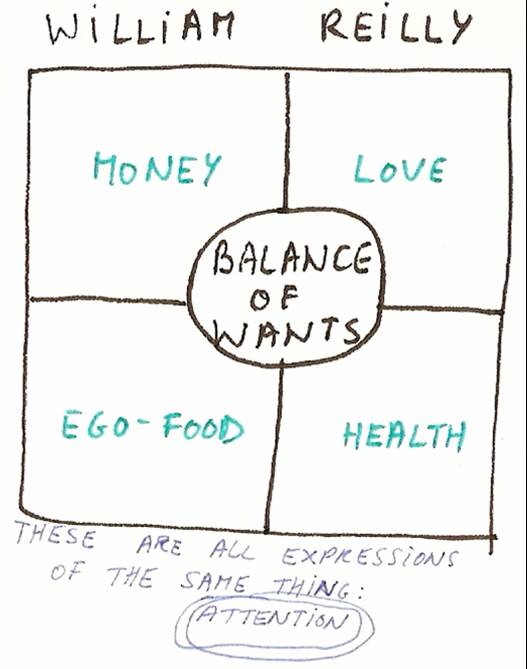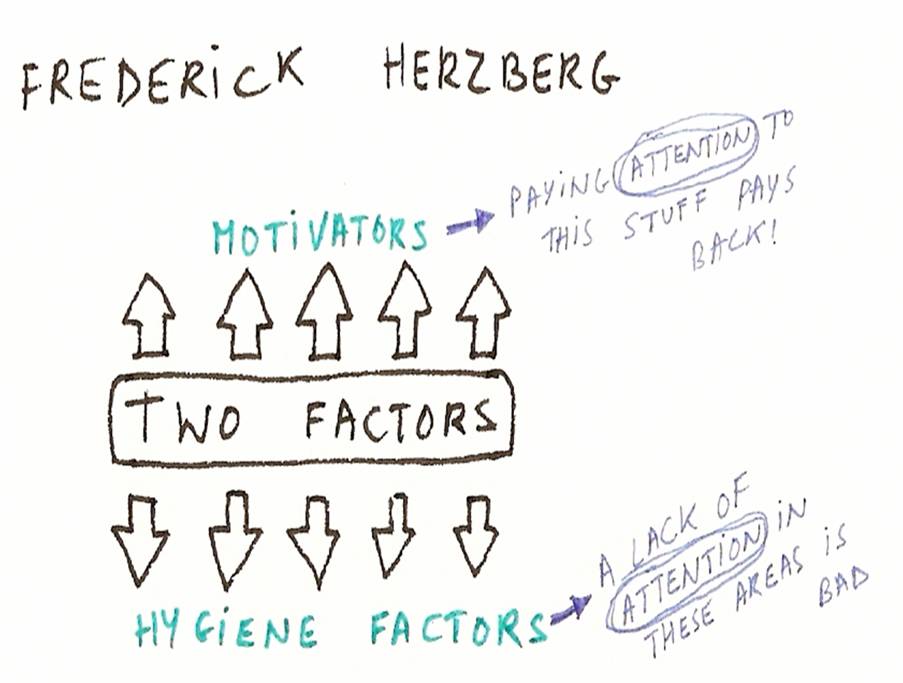Management is not a science like mathematics or quantum physics, but sometimes the truth comes to the forefront like laws of nature. One of those is the basic need for attention. Translated into workplace mumbo-jumbo this means that people (starting with you and me) have a basic need to be proud of what they are being and doing.
Too bad we are clueless when it comes to ‘managing’ attention … because there’s quite some evidence that this would be a wise thing to do.
Attention is the Common Denominator
In the domain of motivation theory some gurus have summarized and visualized the motivation laws of gravity and other major truths even before I was born. When we have a closer look, there is one thing that all of them have in common: attention as the driving force. Let’s have a look at my three favorites:
1. Abraham Maslow’s Hierarchy of Needs (1943)
Maslow’s hierarchy of needs is often depicted as a pyramid consisting of five levels. Like in a computer game we only worry about the needs of certain level if the needs of all the lower levels are met.

Fulfilling the needs of a certain level is nothing more than managing the attention on that level.
2. William Reilly’s Balance of ‘Wants’ (1957)
Quite an old book in which he describes the 4 basic ‘wants’. Way less popular than Maslow, not the most requested article from the Harvard Business Review like Herzberg – but to the same extent pretty much to the point when it comes to describing what we really want.

All of the things we want so much are actually a form of expressing attention, the currency of attention so to speak. (thanks to Michael Neill for pointing me to this reference).
3. Frederick Herzberg’s Two Factor Theory (1959)
According to his theory, people are influenced by two factors. First, motivation factors, which help increase satisfaction but have little effect on dissatisfaction. Second, hygiene factors which, if absent or inadequate, cause dissatisfaction, but their presence has little effect on long-term satisfaction.

In other words: motivators are the factors that add value if you pay attention to them (note the management term: ‘paying’ attention, as if it were a resource like money, time and manpower). Hygiene factors on the other hand are those things that are damaging if we don’t pay attention to them.
Attention Management
Those of you who regularly scan through the ‘question & answer’ section of LinkedIn may have noted that there is one question that keeps coming back: ‘what is the difference between managing and leading?’. A lot of interesting responses pop up, some more practical than others. In the light of this post, I could offer an additional answer to that question:
Managing = taking care of the resources Time, Money and Manpower.
Leading = adding the resource ‘Attention’ to that list.
If there is one thing that I want to continue blogging about in 2008, it is attention management. Take my word for it: it’s my new year’s resolution.

